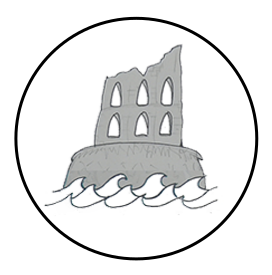A Discovery About a Priceless Roman Artefact
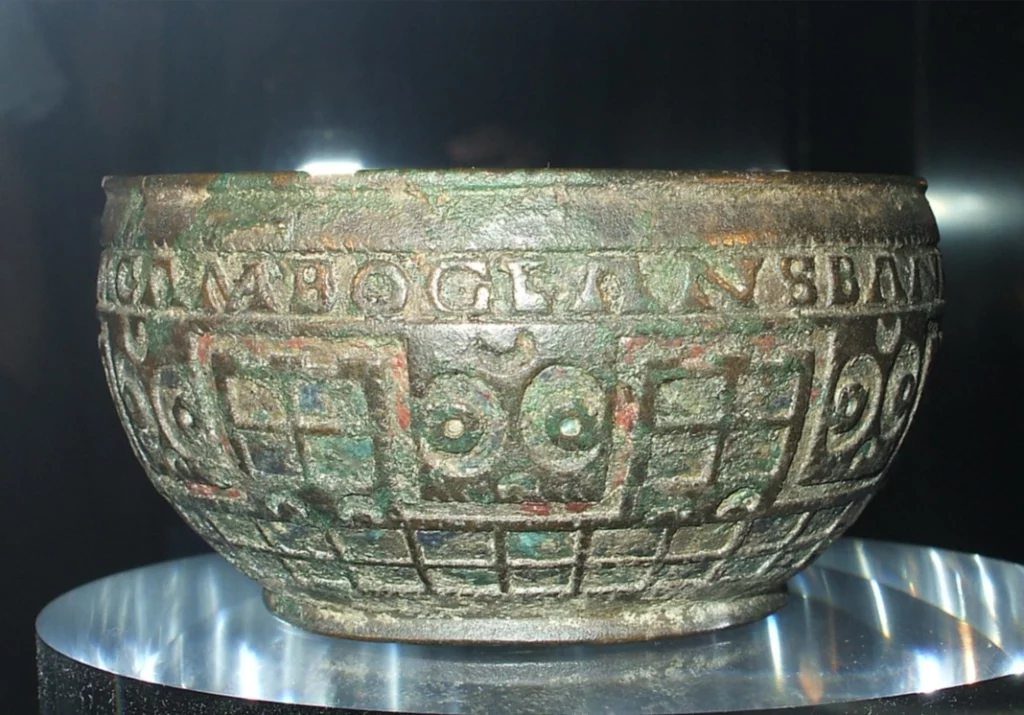
The Rudge Cup is a enamelled bronze bowl dating from around 130AD. This and two other similar bronze vessels, along with two late-Empire documents, make up the only contemporary references we have for Hadrian’s Wall.
This makes the Rudge Cup a priceless piece of history. The cup depicts the Wall with 7 battlements that can reasonably be equated to forts, as across the top of the bowl are the names of 5 of the western Wall forts.

The Rudge Cup was possibly part of a set of 3 that included the names of the forts in the central and eastern sections. It was made just a few years after the Wall was built and it reflects the pride that the army would have had in the immense construction that they built and manned. It is held at Alnwick Castle and a replica is in the British Museum.
I decided to draw the patterning from the Rudge Cup as a decoration for my map of the Wall, and it felt like I was connecting with the original artist all the way back 1900 years in the past, which is a strange feeling, similar to being deeply moved by reading an ancient work of literature.
I was aware that I was making an idealised representation of the pattern, using exact shapes with uniform spacing and by making a standard form out of the strange curved shapes between the battlements. This made a very neat image, but one with less character than the original. However, by doing it in this easy and removed way, the original vision in the artist’s mind became a bit clearer to consider.

Colours extracted from this drawing:
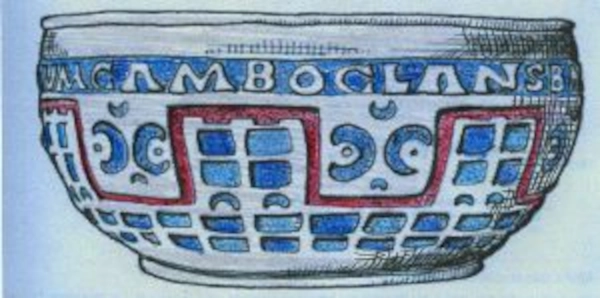
Keeping a Watch
A strange thing then struck me. According to Wikipedia, the shapes between the battlements are of a leaf-shaped design. But what I see is pairs of eyes staring out from behind the Wall, looking right back at you, or right at the native barbarians, so to speak. That gives the vessel, when painted in its original enamel, both a humorous and human quality, comical and spooky, like a gang of Marvin the Martians peering out from the walkway. They could be something more vulgar as well…
If these shapes are actually eyes, then this means the Rudge Cup (and the virtually identical Amiens Patera), as well as being the only contemporary artistic depiction of the Wall, is the only example of a human reference to it, with soldiers standing on it and using it as per its function, rather than Hadrian’s Wall being just a prosaic entry on a map or a recording in a register.
I have seen no claim that these concentric circular shapes are eyes, but to me, that’s what they look like. Probably nobody has ever tried to draw the design out in this way, certainly not in full colour, but I still find it surprising no one has hitherto made this observation.
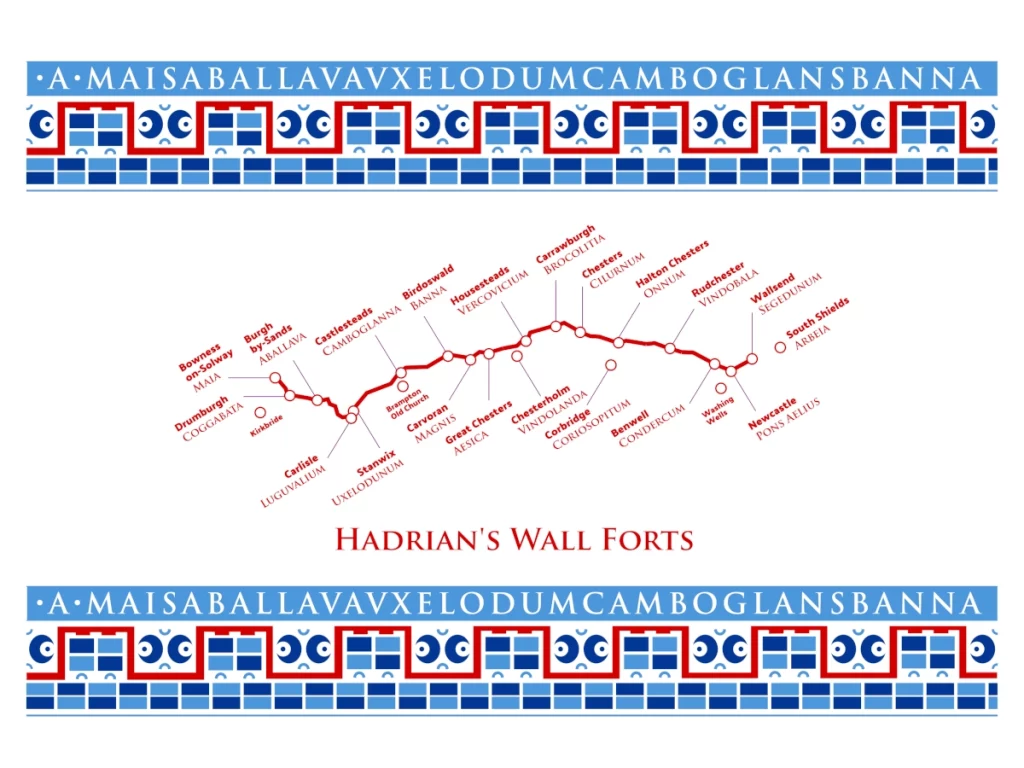
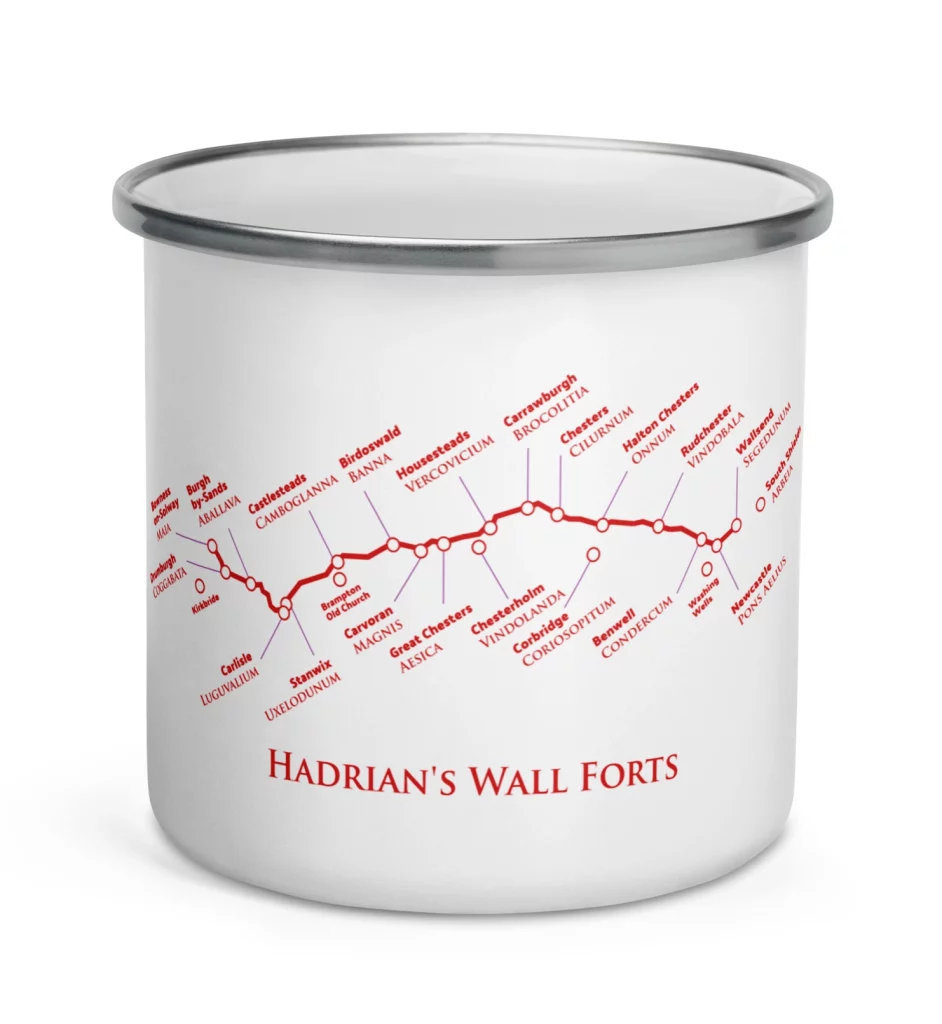
Notes
History of the cup: https://en.wikipedia.org/wiki/Rudge_Cup
The two similar objects with names of Cumbrian Wall forts:
- The Staffordshire Moorlands Pan featuring a ‘leaf’ design, common to Celtic art. Found by a metal detectorist in 2004.
- The Amiens Skillet featuring a design almost identical to the Rudge Cup.
It’s unlikely these were used as cooking vessels or mess tins, but were instead gifts awarded for service or simply souvenirs.
The two late-Empire documents that mention the Wall are the Notitia Dignitatum and the Ravenna Cosmography.
